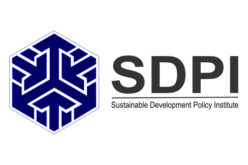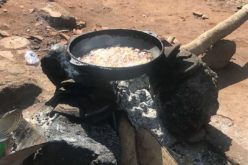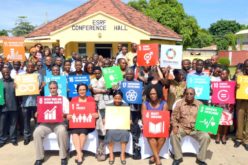Alternatives For Development Or Alternatives To Development?
This post has been written by Mireya Villacís, María Fernanda Mora and Rodrigo López, researchers at CEDA in Ecuador. They are working on a research project that explores the post-2015 agenda in the amazon region as part of the Southern Voice Initiative. In this post they explore how alternatives to development and the post-2015 and SDG agendas relate.
As stated in the Report of the High-Level Panel of Eminent Persons on the Post-2015 Development Agenda (HLPR), no one can deny the important role that the Millennium Development Goals (MDGs) have had around the world. However, as recognized by the same Panel, there were many issues that the MDGs did not address, such as: the devastating effects of conflict and violence on development, the importance of good governance and institutions that guarantee the rule of law, free speech and open and accountable government, the need for inclusive growth to provide jobs, and the integration of the economic, social, and environmental aspects of sustainable development, which includes the promotion of sustainable patterns of consumption and production.
Importantly, environment and development were not properly integrated and the effects have become clear in areas like deforestation, water scarcity, food waste, and high carbon emissions. In this scenario, the HLPR highlights the fact that progress is possible and that there is an opportunity to solve current world problems if all actors: governments (at all levels), multilateral institutions, businesses and civil society organizations act together and are willing to change the current paradigm.
It sounds like a very innovative idea and in line with the currents needs of the planet. However, it is important to bring to the discussion that, since the 1990s some groups in the Andean Region (such as in Ecuador and Bolivia) started to challenge the global definition of development, and started to place into the global agenda the need for a new paradigm. Those groups (governments, civil society, indigenous groups, feminists and others), started talking about different alternatives that are not necessarily linked to the traditional concept of development[1], they called these ideas: alternatives to development (see the Permanent Working Group on Alternatives to Development).According to some authors, these alternatives to development must focus on key concepts such as:
– Conviviality
– Strong sustainable development, biocentric, deep ecology
– Economy dematerialization, degrowth
– Interculturality, pluralism, related ontologies, expanded citizenship,
– ¨Buen Vivir¨ or Good Living (Gudynas, 2011: 47)
In fact, in South America the paradigm of Buen Vivir or Good Living, is taking greater strength. For example, two countries – Ecuador and Bolivia – enroll in their constitutions the decision to build states aligned to Good Living, recognizing diversity, interculturality and national diversity, as fundamental axioms for the development of their populations.
The Case of Ecuador
In 2008, this small South American country, made deep constitutional reforms, starting with the recognition of the ethnic and cultural population diversity, as well as the rights of Nature. Additionally, the country proposed to change the theoretical, political and philosophical foundations of the development model, as it was conceptualized in the twentieth century, jumping to a new paradigm known as Buen Vivir or Sumak Kawsay (Good Living). This proposal represents the main ideological support to achieve and ensure the welfare and quality of life of the population in harmony with nature.
In order to make the concept of Good Living a reality, the Ecuadorian government established a national policy known as Plan Nacional del Buen Vivir (PNBV) or the National Plan for Good Living (2009-2013 and 2013-2017), which contains the official instruments that establish the goals, outcomes and outputs expected for the country.
In this context, it is important to consider that this alternative approach to development not only influences the micro level of a society, but it also has an influence at a global level. Taking a new approach means the (re)consideration of new ways to understand and build the welfare of people, urging society to think and imagine alternatives to development that leads the course towards new types of social, cultural, economic, political and environmental systems. In order for this new system to work, the world should follow the same path because otherwise national efforts will not have a significant impact.
Are National and International Agendas Aligned?
Hereby we offer a quick overview on how the MDGs and the proposal of the High Level Panel for the SDGs, relate with the PNBV as a way to continue the discussion about alternatives for development or alternatives to development.
The High Level Panel proposes 12 goals after 2015, which highlight the different needs among different groups of people. For example, they state how young people asked for life skills, jobs, good education, sexual and reproductive rights, access to information and technology, etc.; women and girls ask for protection of their property rights, access to land, having voice and participating in economic and political life, ending violence and discrimination. Indigenous representatives “wanted recognition of their need to live more balanced lives in harmony with nature. They want restitution, non-discrimination and respect for their ancestral ways”.
The panel also emphasizes the fact that developed countries have to do more “to put their own house in order… and promote sustainable patterns of consumption and production”. In fact they make a strong point in the need for the developed world to “re-imagine their growth models” and to invest in new technologies “to reduce the footprint of unsustainable production and consumption patterns”. They finally agree on the idea that “most of the money to finance sustainable development will come from domestic courses, and the panel urges countries to continue efforts to invest in stronger tax systems, broaden their domestic tax base and build local financial markets”.
Among the goals stated in the PNBV are the consolidation of a democratic state; equality, cohesion, inclusion and social and territorial equity and diversity; improvement of the quality of life of the population; strengthening the capacities and potential of citizens; establishing common meeting spaces; building and strengthening national identity, plurinational and intercultural; respect for human rights; guaranteeing the rights of nature; the promotion of regional and global environmental sustainability; consolidation of social solidarity and economic systems; ensuring jobs in all its forms; promotion of the transformation of the productive matrix, and industrial and technological transformation; sovereignty and peace in the world; and Latin American integration.
Therefore, Ecuador absorbs the eight MDGs proposed by the United Nations as a Convention signatory country, and the 12 goals proposed by the High Level Panel after 2015, but it recognizes that, for its reality, these goals are not enough to achieve Buen Vivir in its own national reality. The National Plan for Good Living (PNBV), in theory, proposes “high social levels” which will recover human rights and universal values, as well as the rights of nature; and not only the poverty reduction is the main goal, but also the capability to reduce social, territorial, economic, environmental and cultural inequalities. We have prepared an initial comparison among the MDGs SDGs and the PNBV that is available here. It portrays how these three frameworks differ in different dimensions.
As a way of conclusion we can say that the MDGs and the new proposal for post-2015 goals (SDGs) arealternatives for development because the improvement of the quality of life is essentially linked with economic growth and progress. On the other hand, the proposal made in Ecuador for “Good Living”, which was built since the beginning as an alternative to traditional development, promotes a new paradigm which includes interculturality, solidarity, social inclusion, rights of nature, and explicitly addresses the decrease of inequities. However, there is no black and white answer – it is unrealistic to think that a country alone can have its own unique system that will work aside from the global model. Therefore, although the contribution of these new alternatives is undeniable, it is still based on the traditional concept of development. Furthermore, there are still challenges to prove whether these policies are having a real impact on society and whether they are applicable to different regions within and among countries.
It is necessary to do more research about the achievements that Ecuador (in this case) has reached within these goals, as possible inputs for the construction of the new global Post-2015 Development Agenda.
[1]The contemporary development notion has been understood as [a] linear, modernizing, base material progress essentially based on the appropriation of Nature, mediated by science and technology, and guided to economic growth as a key generator of welfare. From this perspective, welfare is achieved by monetary incomes and consumption (Gudynas, 2013a: 138). [A] political and cultural construction like the image of the industrialized countries (Gudynas, 2013B: 190)
1,947 total views, 3 views today







